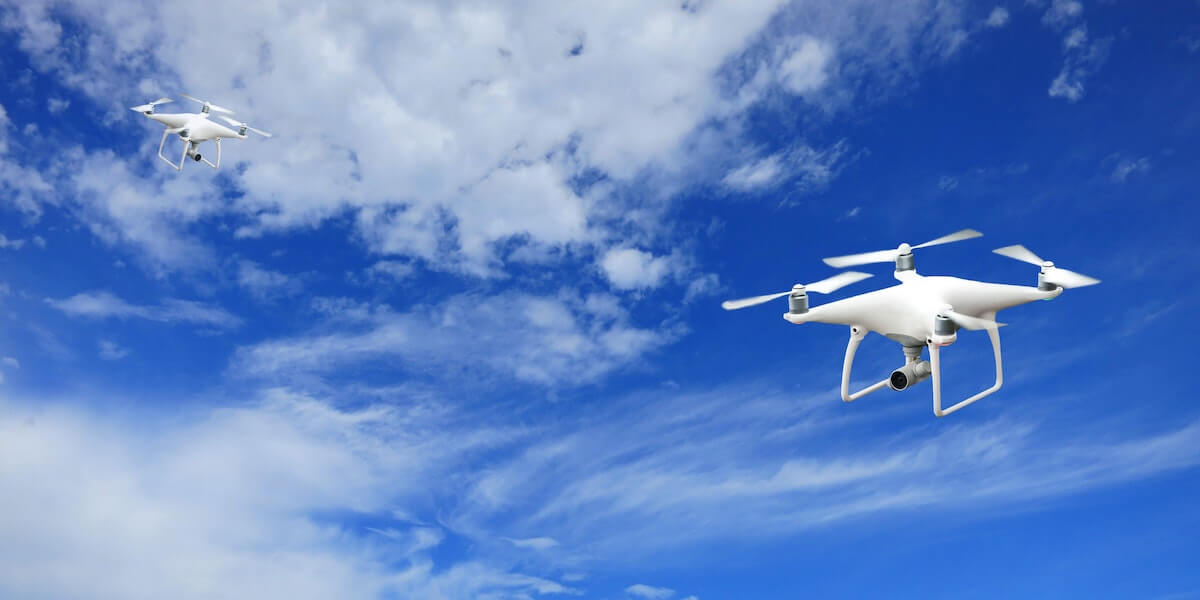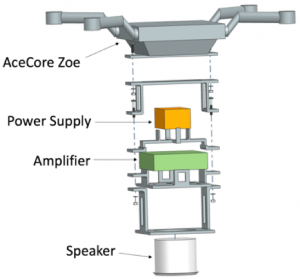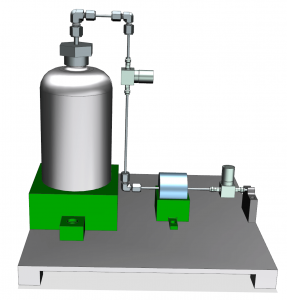
Drone. PHOTO/PEXELS, PIXABAY.
Two AME 441 student teams were recognized by the AIAA at the AIAA Region VI Student Conference. The teams won 2nd and 3rd place at the conference, and presented their projects at the end of March.
The award-winning projects were:
Practical Limitations of UAV Flight Disruption via Acoustic Forcing

Design of the team’s drone disruption system, which utilizes soundwaves to interrupt drone operation. IMAGE/ EMMA ROBERSON.
Team members: Miranda Costigan, Chris Edwards, Miles Kay and Emma Roberson
Drones have become increasingly common, for everything from leisure to criminal surveillance. Unfortunately, they have also become an accessible and inexpensive tool for criminal activity. This AME 441 team worked to create a system that can use sound waves to disrupt drone flight.
Said Roberson: “We designed a group of four hunter drones carrying loudspeakers and simulated the system using a computer program called MATLAB. Our system demonstrated the ability to reduce propeller thrust, although additional studies are needed to determine whether the system can reliably ground a drone.

The team’s design for a warm gas thruster system that warms a small quantity of gas at a time to be more energy efficient. IMAGE/ MICHAEL MASTRANGELO.
A Novel Staged Warm Gas Thruster for CubeSats
Team members: Michael Mastrangelo, Connor Powers, Spencer Powers, Spencer Wing and Kamyar Zarkoub.
CubeSats, or small satellites made of modules that can each fit in your hand, often use a type of thruster called a cold gas thruster to maneuver in space. These thrusters are as simple as you can get; they just work by expelling pressurized gas through a nozzle. While these thrusters are simple and reliable, this simplicity also yields rapidly decaying performance over the life of the satellite. Warm gas thrusters are nearly identical to their cold gas cousins, but they use electrical power to heat the propellant, which improves the performance of the thruster as the gas has more energy to impart to the satellite. However, this inherently requires significantly higher power requirements for these small satellites for which power is typically scarce.
The team worked to achieve performance comparable to warm gas thrusters without the additional power requirement. The team’s design, Mastrangelo said, focused on slowly heating small quantities of gas, just enough for a single maneuver at a time. The tradeoff that this design incurred was between impulse availability and thruster efficiency; if each maneuver requires the satellite to start heating the required propellant minutes in advance of the actual burn, this means that the satellite’s reaction time to an event that requires an immediate maneuver is longer.
“Modern CubeSat missions on orbit typically have pre-planned maneuvers that are sufficiently far apart to make this approach viable,” Mastrangelo said. “As a result, our final design produces 90% more total impulse than a cold gas thruster while using 80% less power than a warm gas thruster, thereby enabling missions that were previously out of reach for CubeSats using standard cold gas thrusters.”
Published on April 14th, 2021
Last updated on April 14th, 2021













